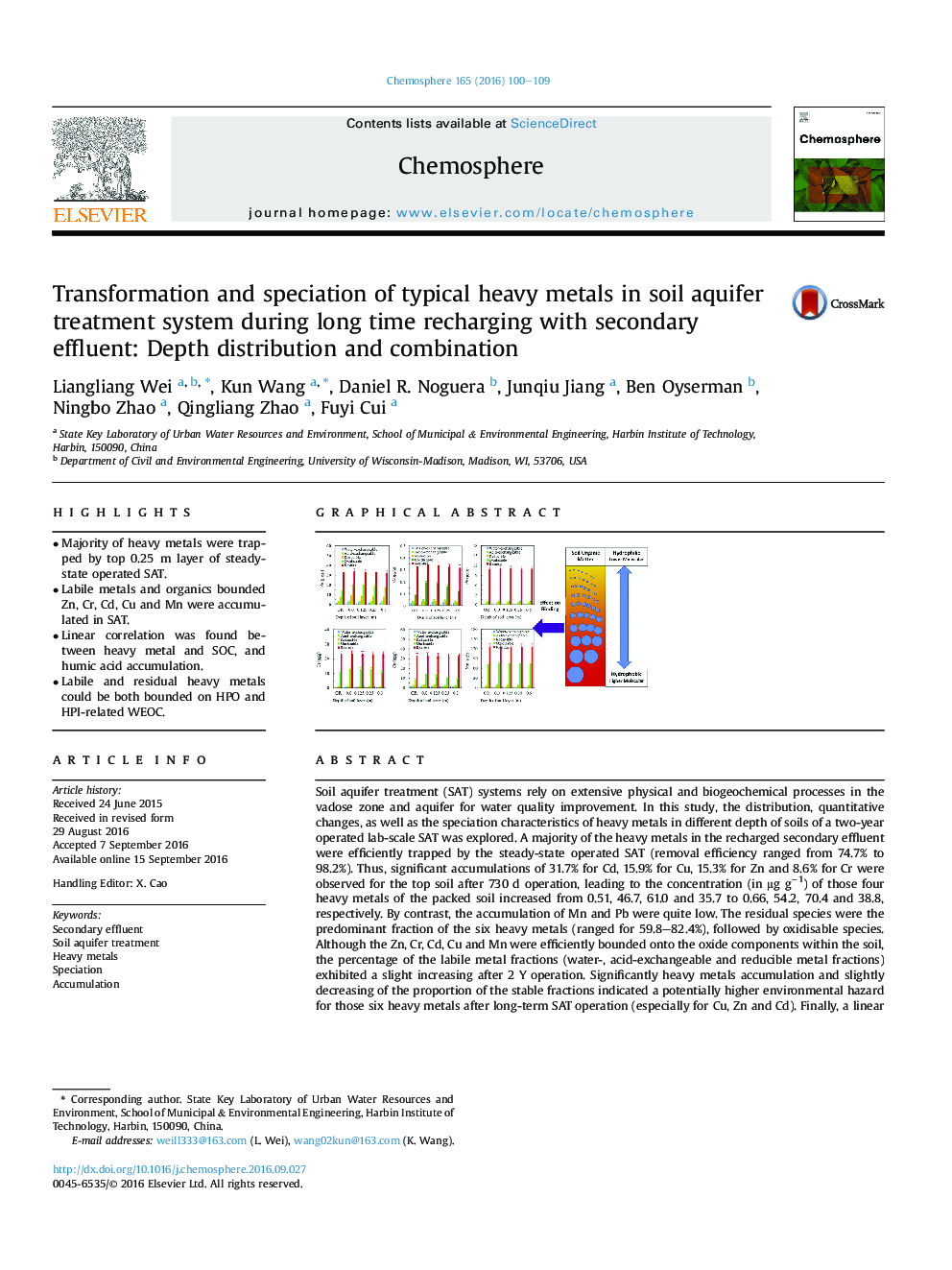| Article ID | Journal | Published Year | Pages | File Type |
|---|---|---|---|---|
| 4407333 | Chemosphere | 2016 | 10 Pages |
•Majority of heavy metals were trapped by top 0.25 m layer of steady-state operated SAT.•Labile metals and organics bounded Zn, Cr, Cd, Cu and Mn were accumulated in SAT.•Linear correlation was found between heavy metal and SOC, and humic acid accumulation.•Labile and residual heavy metals could be both bounded on HPO and HPI-related WEOC.
Soil aquifer treatment (SAT) systems rely on extensive physical and biogeochemical processes in the vadose zone and aquifer for water quality improvement. In this study, the distribution, quantitative changes, as well as the speciation characteristics of heavy metals in different depth of soils of a two-year operated lab-scale SAT was explored. A majority of the heavy metals in the recharged secondary effluent were efficiently trapped by the steady-state operated SAT (removal efficiency ranged from 74.7% to 98.2%). Thus, significant accumulations of 31.7% for Cd, 15.9% for Cu, 15.3% for Zn and 8.6% for Cr were observed for the top soil after 730 d operation, leading to the concentration (in μg g−1) of those four heavy metals of the packed soil increased from 0.51, 46.7, 61.0 and 35.7 to 0.66, 54.2, 70.4 and 38.8, respectively. By contrast, the accumulation of Mn and Pb were quite low. The residual species were the predominant fraction of the six heavy metals (ranged for 59.8–82.4%), followed by oxidisable species. Although the Zn, Cr, Cd, Cu and Mn were efficiently bounded onto the oxide components within the soil, the percentage of the labile metal fractions (water-, acid-exchangeable and reducible metal fractions) exhibited a slight increasing after 2 Y operation. Significantly heavy metals accumulation and slightly decreasing of the proportion of the stable fractions indicated a potentially higher environmental hazard for those six heavy metals after long-term SAT operation (especially for Cu, Zn and Cd). Finally, a linear relationship between the accumulation rate of metal species and the variation of soil organic carbon concentration and water extractable organic carbon was demonstrated.
Graphical abstractFigure optionsDownload full-size imageDownload as PowerPoint slide
